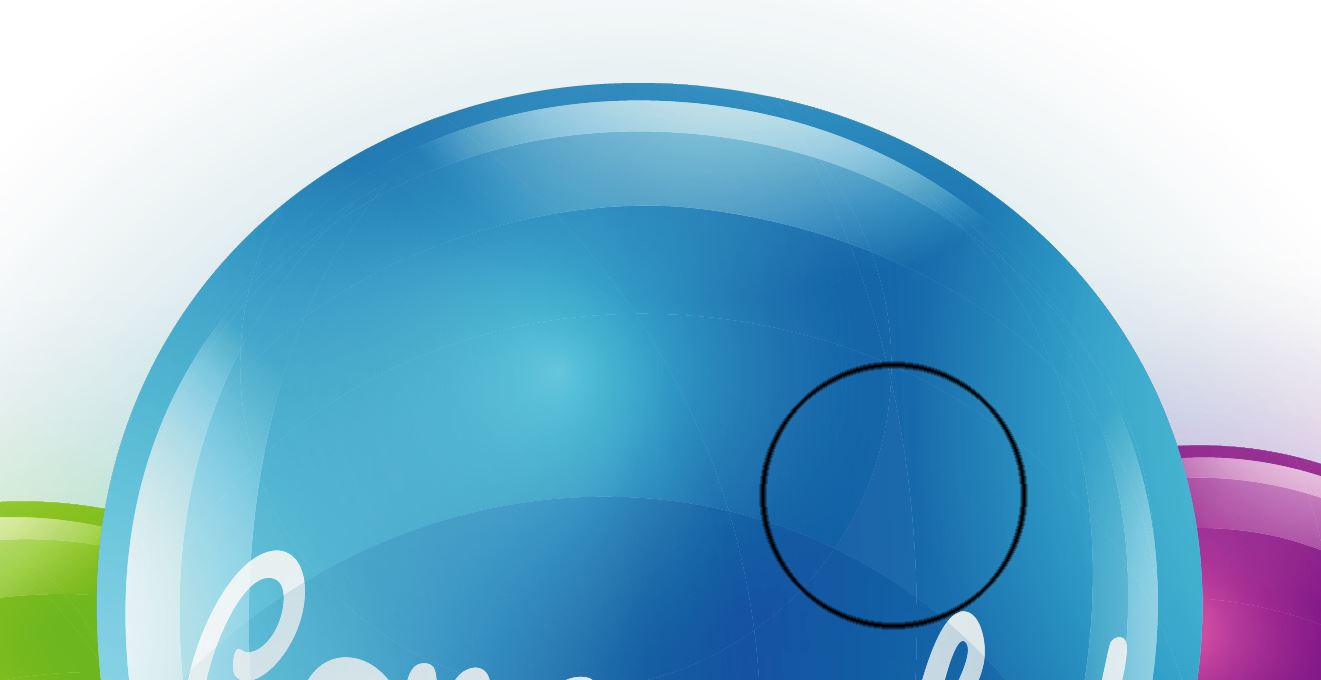- Home
- Illustrator
- Discussions
- RGB to CMYK conversion issue- Pulling my hair out@
- RGB to CMYK conversion issue- Pulling my hair out@
RGB to CMYK conversion issue- Pulling my hair out@
Copy link to clipboard
Copied
Hi there-
I have downloaded a VECTOR image from Shutterstock, and it was built as an RGB file. When I try to convert it to CMYK (File-->Document Mode-->Concert to CMYK), it totally whacks out the image. I have tried everything I know how to do, and can't figure this out. I've tried changing the colors in the palette to CMYK, but it doesn't convert them permanently.
I'm attaching two files (as JPEGS so you can see the problem), one shows the sunshine image nice and smooth. The other is after the conversion to CMYK.
If you have any ideas, or want to see the actual file, please email me at bsmith6356@gmail.com and I will send you the actual .eps file.
THANK YOU!
Brent

Explore related tutorials & articles
Copy link to clipboard
Copied
but it doesn't convert them permanently.
If the colors don't stick at the values you specified, then your document is not CMYK and you only have converted the objects that make up the artwork, that is AI tries to mimic the percentages based on RGB equivalents. That aside, there is no easy way to convert transparencies between modes. The appearance changes 99% of the time due to how the blending is calculated differently. Adjusting your graphic will probably require much more work than just switching modes, but without seeing it,nobody can tell you the exact steps. i would assume that the RGB version is simply using Screen blending mode to fade the edges, but that simply won't work in CMYK and you will genuinely have to create fade gradients...
Mylenium
Copy link to clipboard
Copied
Hi Mylenium-
Thanks for the input. The thing that I find so odd is that all of the gradients (except one) are made of black. There is only one gradient in the file that is made up of an orange to yellow. It almost seems like I should be able to change the orange to yellow gradient by creating new colors (that match the orange and yellow) out of CMYK...and that the rest would be fine during the conversion since the colors are black only.
Any way that I can send you the image to take a quick look?
Brent
Copy link to clipboard
Copied
I checked your file, it is what Mylenium said. The rays were created with a lot of objects (ellipses) with grayscale gradient in screen blending mode over an orange/yellow gradient background. In screen blending mode only the color lighter than the orange/yellow gradient background is visible.
To fix that in CMYK mode you have to change the gradient and transparency of each object to achieve the same appearance which with this graphic is a lot of work. If it is me I will scale the graphic at a printing size, select all except the text, and go Object > Rasterize. Then convert to CMYK.
If you do it that way, make sure to do it on a copy and keep the original RGB file for different printing sizes.

Copy link to clipboard
Copied
Hi Brent,
Not sure how the file is built, but one thing to check is if the file uses "Opacity Masks". It's a feature under the Transparency window.
Most of the time this creates issues going the other direction (CMYK>RGB). This is due to the Opacity mask being 100% black in CMYK (well, in some parts going to 100% since I'm guessing gradients could be used) . The black gets translated to an RGB value "near black" (about 35.31.31 RGB). Versus the 0.0.0 RGB that is "true RGB black".
Make sure the Transparency window up and select the gradient you have issues with. It there is a link and a second box (looks like a layer mask in PSD).
Then that could be your issue.
Good luck.

Copy link to clipboard
Copied
Expand the object, then convert to cmyk
Copy link to clipboard
Copied
John Kallios wrote:
Expand the object, then convert to cmyk
That will make no difference for RGB to CMYK conversion
Copy link to clipboard
Copied
Emil
do this test, select all and then
1. Object/Flatten transparency
2. Change To CMYK Document Color mode
Here in My Mac Ai CS4 the conversion goes fine with this method, but you end up with a mess of rasterized objects, so I prefer this other method
I show in a Flash video here http://dl.dropbox.com/u/3264257/RGBtoCMYK%20Issue.swf
I made it with no much care on details but you can get the idea, wich is isolate the background and turned into a Photoshop Smart Objetc, this way the BG remains vector and you can make any change, any momment.
So give it a try ant tell me if it worked for you.
Copy link to clipboard
Copied
Didn't watch the whole video, too long but I got the idea from your message.
Well, I see it as doing basically the same as what I suggested but in a much more complicated way. I think it is more simple to make your edits on the RGB file and when sending to print reaterize and convert to CMYK. You can always use proof colors preview in CMYK to check color choices in CMYK, if the the ugly CMYK preview of the graphic bothers you you can always make a rasterized copy on another layer and hide the original. I don't see the need to go through Photoshop for this.
Copy link to clipboard
Copied
Didn't find the video in the link can you share the new link with us?
Copy link to clipboard
Copied
mohitr65276604 schrieb
Didn't find the video in the link can you share the new link with us?
A 6 year old Flash video? Your browser might not even allow you to watch it.
Please create a new thread and describe your problem.
Copy link to clipboard
Copied
THANK YOU!!! I have dealt with this issue for years... you literally just saved me from being murdered by my printer.

Copy link to clipboard
Copied
That will make no difference for RGB to CMYK conversion
Interesting observation.
When live effects are used which only work in rgb mode, the effects need to be expanded before converting to cmyk.
There are more ways to achieve the same end.
Copy link to clipboard
Copied
I received the file in question from the OP. The graphic was made with gradients in screen blending mode over colored background. Expanding doesn't change the screen blending mode. If you don't have the file, here's a simple way to reproduce the problem.
In RGB document create a box with the color R255 G0 B0. Create another smaller box on top of the first one with radial gradient using black R0 G0 B0 and white in the center. In the Transparency panel change its mode from Normal to Screen. Now convert the document to CMYK.

Copy link to clipboard
Copied
I did not read your original post describing the construct. I read your reply to mine as a generic statement to all rgb to cmyk conversions instead of this consruct.
In this scenario, I would use flatten transparency with setting to preserve alpha transparency then convert to cmyk mode. This scenario will still create a raster element but maintain vector where possible, as long as vector slider is towards vector, and maintain the color to acceptable tolerances.
Same caveat applies to saving original for editing purposes.
Copy link to clipboard
Copied
yeah, Flatten Transparency will automatically select what to rasterize and keep some editing possibilities but it is obvious that the OP acquired this stock image graphic to use it as is and the only thing that can be possibly edited is the text.
Copy link to clipboard
Copied
Hi John-
I'm the OP. If you want to see the file that I'm working with, you'll see what Emil is referring to. It's quite a beast of a file (in complexity).
You can shoot me a private message or post your email address and I can forward it to you.
I appreciate everyone's input on this!
Brent

Copy link to clipboard
Copied

Original file above.
Select all
Object> Flatten transparency (check preserve alpha transparency with slider to 100 vector)
Change color settings (edit> color settings) to emulate Illustrator 6.
Convert to cmyk mode
Results

There were two main issues converting to cmyk.
Use of screen blending mode and the gradients themselves.
Screen blending mode was described in previous posts.
The gradients look also changed when converting from rgb to cmyk. If the screen blending mode was switched to normal, when converting to cmyk, the gradients would not look the same.
Flattening transparency is not an elegant solution, but it is a quick and dirty one.
Mario described this method in a previous post.
Depending on your color settings, it may yield unwanted artifact colors. Turning off CM, setting to Illustrator 6 emulation, will not yield the artifacts.
Copy link to clipboard
Copied
Thank you all for your input on this, not only did I come up with a solution but I learned a lot along the way!
Brent
Copy link to clipboard
Copied
Thanks for all the help as I was struggling with the same thing and came across this thread! I too am using a downloaded RGB vector that I'm trying to convert to CMYK. Your solution worked great for me as far as preserving the blends and color (as did artboy's below). However, it leaves little white outlines where the shapes were that created the blends. I've attached screen shots. Any idea how to fix this?
This is the RGB image:
And this is the CMYK image after following your instructions. It's easiest to see in the circled portion, but very easy to tell throughout the whole graphic on my monitor.

Thanks for your help if you're still out there ![]()
Copy link to clipboard
Copied
I got another piece of vector art in RGB which had the same issue. I forget what I originally
posted but the simplest way to get a proper CMYK conversion is to select your art/object and go to object -
flatten transparency. I do notice some white hair lines in the final art
(seems to be where one mask of an imbedded gradient meets another). But the overall result
is pretty good.
Copy link to clipboard
Copied
When you flatten transparency you will almost always get white lines because of the stitching. You won't even need to change document color mode in order to get the stitching.
Copy link to clipboard
Copied
Thank you both for your replys. Glad to know I'm not alone!
Copy link to clipboard
Copied
I am adding my thanks as well. I had a similar problem that was making me crazy -- but now I know! ![]()
Thanks for taking the time to participate in these forums and help were you can. It's greatly appreciated!
Copy link to clipboard
Copied
Brilliant! I too had the same problem! I converted color profile in the original stock vector illustration, but when I dragged it in to my actual, it washed out. Using your flatten transparency method, it apparently worked. I save the file in an InDesign PDF as one of several images I needed approval on, and sent to the client: look what happened to he image:
The right-hand edge of the hat appears transparent. But only in the PDF proof sent as email. It's not transparent in MY copy of the PDF. Who knows?
-
- 1
- 2
Find more inspiration, events, and resources on the new Adobe Community
Explore Now

